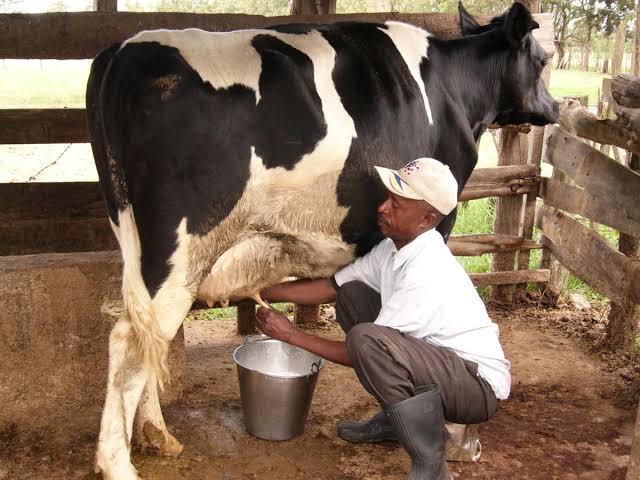Rwanda’s milk production on the rise as cattle population drop
Rwanda’s milk production on the rise as cattle population drop

Figures from Rwanda Agriculture Board (RAB) show that the cattle population in Rwanda, reduced from about 1.4 million cows in 2015, to about 1.16 million heads today.
But milk production increased from about 710,000 metric tonnes to over 816,000 metric tonnes.
Speaking to The New Times, Dr Michel Ngarambe, a farmer organisation specialist at Rwanda Dairy Development Project (RDDP), said that the plan was not to increase the number of cows but increase milk production.
“We have been scaling up artificial insemination services, a move that has resulted in improvement of cattle and increased milk production,” he said.
“The first factor is to improve genetics for cows so that we move from cows producing les milk to those lactating more. The second factor is improving feed for cows,” Ngarambe added.
The RDDP project, he said, is in line with increasing productivity through good farming practices including genetic amelioration, quality feed and disease control.
“By so doing, productivity per cow increases, which means that the number of cows might not go higher,” he said.
The $65.1 million (about Rwf55 billion) project, launched in 2017, is run by the International Fund for Agriculture Development (IFAD), and the Ministry of Agriculture and Animal Resources (MINAGRI).
Available recent figures show that there were 54 cross breed cows, 8 per cent pure, and 38 per cent local breed in 2017, Ngarambe said.
In 2016, 54 per cent of cows in Rwanda were cross breed, 6 per cent pure breed, and 40 per cent local breed, according to figures from MINAGRI.
Gahiga Gashumba, a dairy farmer in Nyagatatre District had between 150 and 200 local breeds in 2008 he was raising on between 120 and 130 hectares which would give him about 40 litres of milk per day.
Now, he told The New Times, that he has about 30 cross-breed cows and gets about 100 litres of milk per day – from 10 lactating cows among them –, which he keeps on a 20-hectare-pasture.
“One of the main factors that drove up milk production is genetic improvement of cow breeds through artificial insemination, which resulted in high productive cows,” he explained.
Ngarambe observed it has been realised that on average, a local breed can produce 3 litres of milk per day, while the cross-breed can produce an average of 8 to 10 litres (which can go up to 20 litres in case of best farming practices) ; and the pure breed can give 30 litre-milk yield per day which can reach 40 litres per day depending on practices.
“We will continue to improve genetics, but we need to conserve the genetics of the local cow breed,” Ngarambe said pointing out that the local breed’s milk has low cholesterol levels than the improved one.
The Director of Veterinary Services at RAB, Dr Isidore Gafarasi, said that in the last 10 years, the number of cows with low milk yield have been decreasing compared to the highly productive ones thanks to use of artificial insemination and improved oxen, giving an example that someone who owned.
“A person who had five cows has now two or three or cows which give him/her more milk than the former,” he observed.
Ngarambe said that ensuring proper feeding that include maize and soya concentrate, and minerals such as calcium, phosphorus in their feeds makes cows healthy, productive and live longer.
